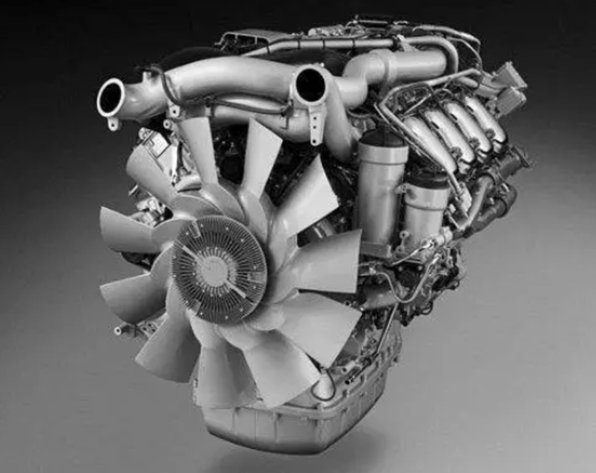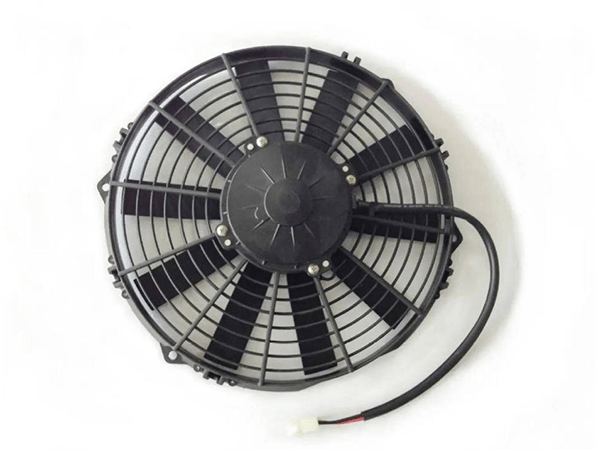
Figure 1: Electric radiator fan.
The radiator fan plays a crucial role in maintaining optimal
engine temperature by assisting in heat dissipation. However, like any automotive component, it can fail over time
due to wear and tear or other issues. When the radiator fan malfunctions, it may need to be replaced to prevent
engine overheating and potential damage.
In this article, we will delve into the various factors that contribute to the cost of radiator fan replacement,
helping you understand the expenses involved and make informed decisions.
1. 5 Factors that Affect the Cost of Radiator Fan Replacement
1.1 Types of Radiator Fans
Before we discuss the cost, it is important to understand the different types of radiator fans available in the
market. There are two main types: mechanical fans and electric fans.
●Mechanical Fans: These fans are usually driven by the engine's belt and operate mechanically. They have a simple
design but can contribute to increased drag on the engine, resulting in reduced fuel efficiency.
●Electric Fans: These fans are powered by an electric
motor and are controlled through sensors and a fan
control module. Electric fans provide better control over engine cooling and consume less power than mechanical
fans.
The type of fan your vehicle requires can impact the overall cost, as electric fans are usually more expensive than
mechanical fans due to their additional components and complexity.

Figure 2: Mechanical fan.
1.2 OEM vs. Aftermarket Parts
Another factor that influences the cost of radiator fan replacement is whether you choose to install an OEM
(Original Equipment Manufacturer) part or an aftermarket part.
●OEM Parts: OEM parts are manufactured by the same company that produced the original part for your vehicle. They
are designed to meet the specific specifications and performance requirements of your vehicle. While OEM parts tend
to be pricier, they often provide a higher level of quality and compatibility.
●Aftermarket Parts: Aftermarket parts are manufactured by third-party companies not affiliated with the original
manufacturer. These parts are typically more affordable than OEM parts but may vary in terms of quality, fit, and
performance. It's important to research and choose reputable aftermarket brands to ensure you get a reliable
replacement.
The price of an OEM radiator fan can be significantly higher compared to an aftermarket counterpart, but it may
offer a better fit and longer lifespan, whereas aftermarket options offer more affordability.

Figure 3: Radiator with fan.
1.3 Vehicle Make and Model
The make and model of your vehicle play a significant role in determining the cost of radiator fan replacement. The
availability and pricing of radiator fans can vary depending on the brand and age of the vehicle. Fans for popular
and widely manufactured vehicles are generally more accessible and affordable due to increased production and
competition in the market.
However, for vehicles with complex or less common designs, locating the right radiator fan may be more challenging
and expensive. Specialized vehicles, luxury cars, or older models might require sourcing parts through specialized
channels or even from dealerships, which can drive up the overall cost.
1.4 Labor Costs
In addition to the cost of the radiator fan itself, the labor required for installation also contributes to the
overall expense. The complexity of the installation process can vary depending on the vehicle's design. Some
vehicles have easy access to the radiator fan, making the replacement a relatively straightforward task.
However, in certain cases, accessing the radiator fan may require removal of other components or disassembling parts
of the engine bay, which can increase the labor time and subsequently, the cost.
It's important to note that labor costs can vary significantly based on the location and the repair shop you choose.
Higher-end repair shops or dealerships may charge more for their services compared to independent or local
mechanics. It's advisable to obtain quotes from multiple service providers to ensure a fair price.
1.5 DIY vs. Professional Installation
While some car enthusiasts with mechanical experience might consider replacing the radiator fan themselves, it's
essential to evaluate your skill level, tools, and the complexity of the process. Incorrect installation can lead to
further damage or inadequate cooling, risking engine overheating.
If you decide to hire a professional for installation, the cost will include both the price of the fan and the labor
charges. Although the labor cost might seem expensive, entrusting the task to an experienced mechanic ensures proper
installation and reduces the risk of potential issues.

Figure 4: Replace the radiator fan.
2. How Much Does It Cost to Replace a Radiator Fan?
The cost of replacing a radiator fan can vary depending on several factors. On average, the cost can range from $200
to $600. This cost includes both the price of the new radiator fan and the labor charges for the installation.
However, it's important to note that prices can vary significantly based on the make and model of the vehicle, the
location of the repair shop, and whether you choose an OEM or aftermarket fan.
To get a more accurate estimate, it is recommended to contact a local mechanic or repair shop with your vehicle
details. They will be able to provide you with an exact cost based on your specific situation.

Figure 5: Cooling fan.
3. Conclusion
The cost of radiator fan replacement can vary depending on several factors, including the type of fan, OEM vs.
aftermarket parts, vehicle make and model, and labor expenses. While OEM parts generally offer superior quality and
compatibility, they tend to be more expensive. Aftermarket options are more affordable, but research and caution are
crucial to ensure satisfactory performance.
When facing radiator fan issues, it's important to consider the severity of the problem, your budget, and your
long-term plans for the vehicle. Consulting with a trusted mechanic or automotive expert can provide valuable
insight and help you make an informed decision.
Remember that regular maintenance and addressing cooling system issues promptly can help prolong the life of your
radiator fan, ensuring reliable engine cooling and avoiding potential expensive repairs down the road.


